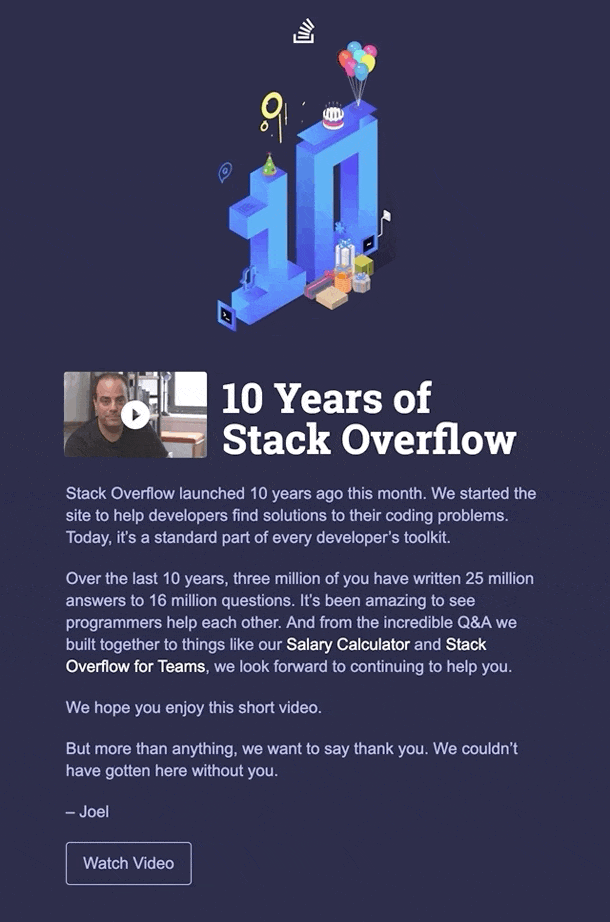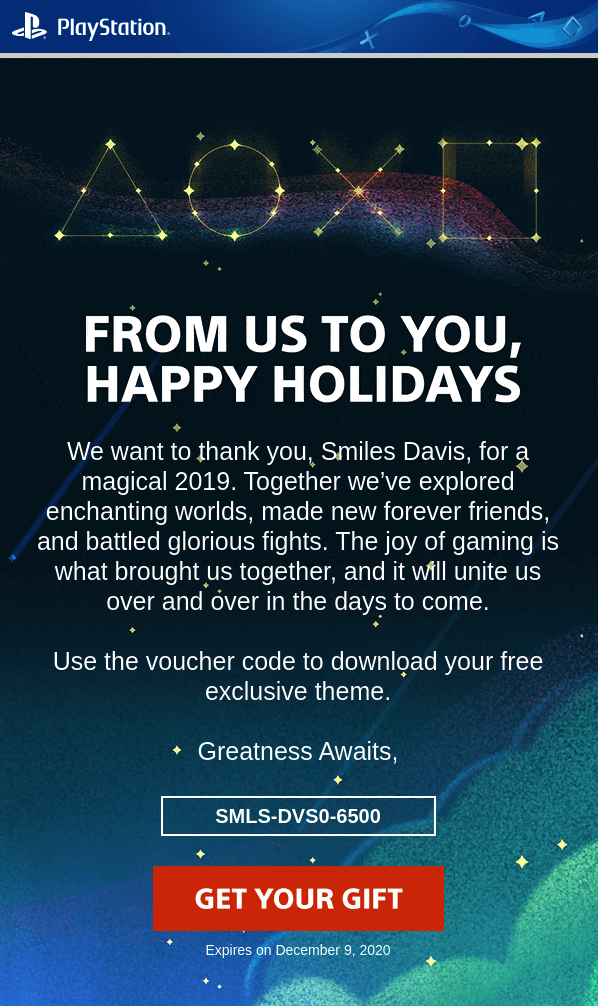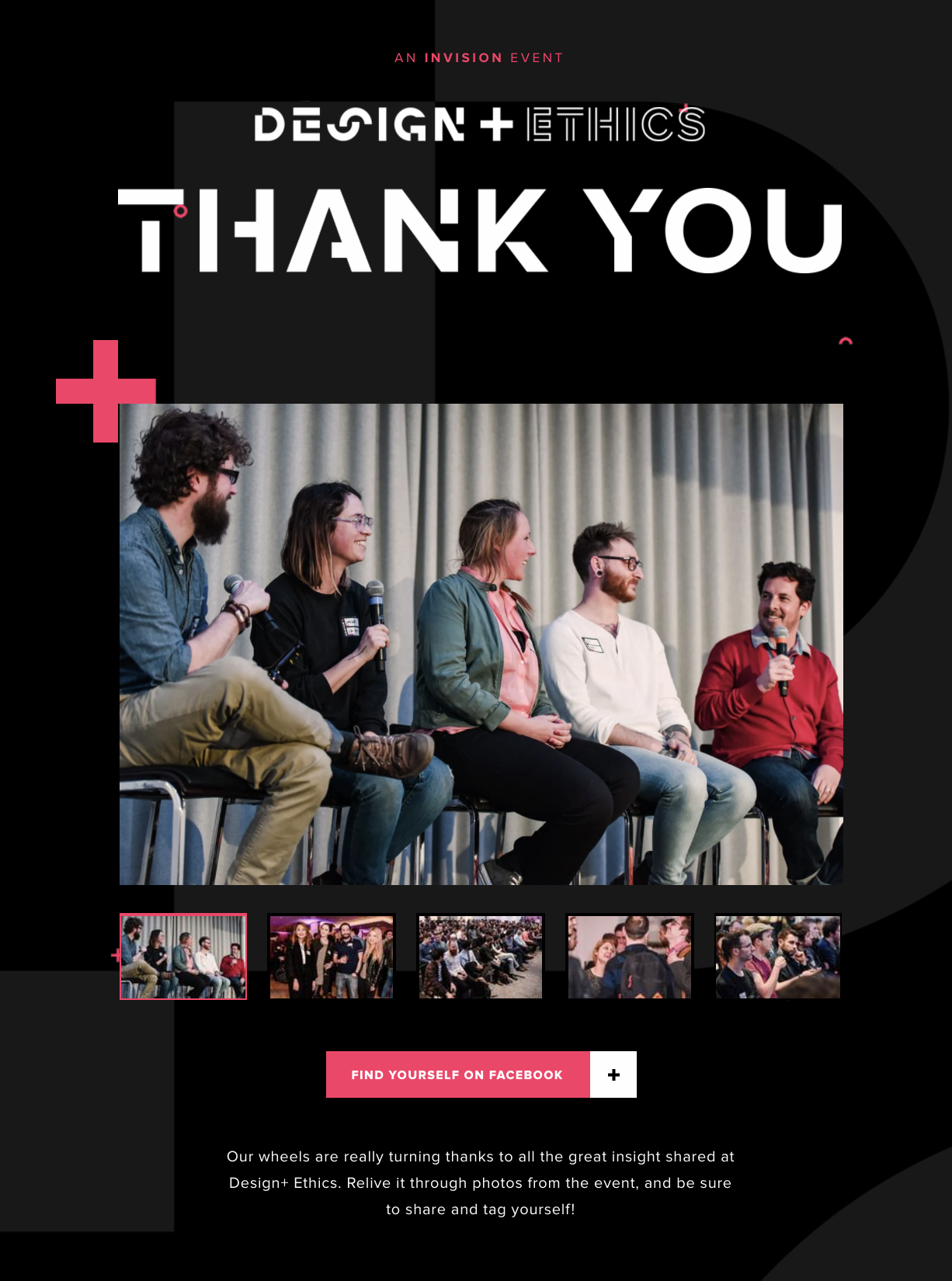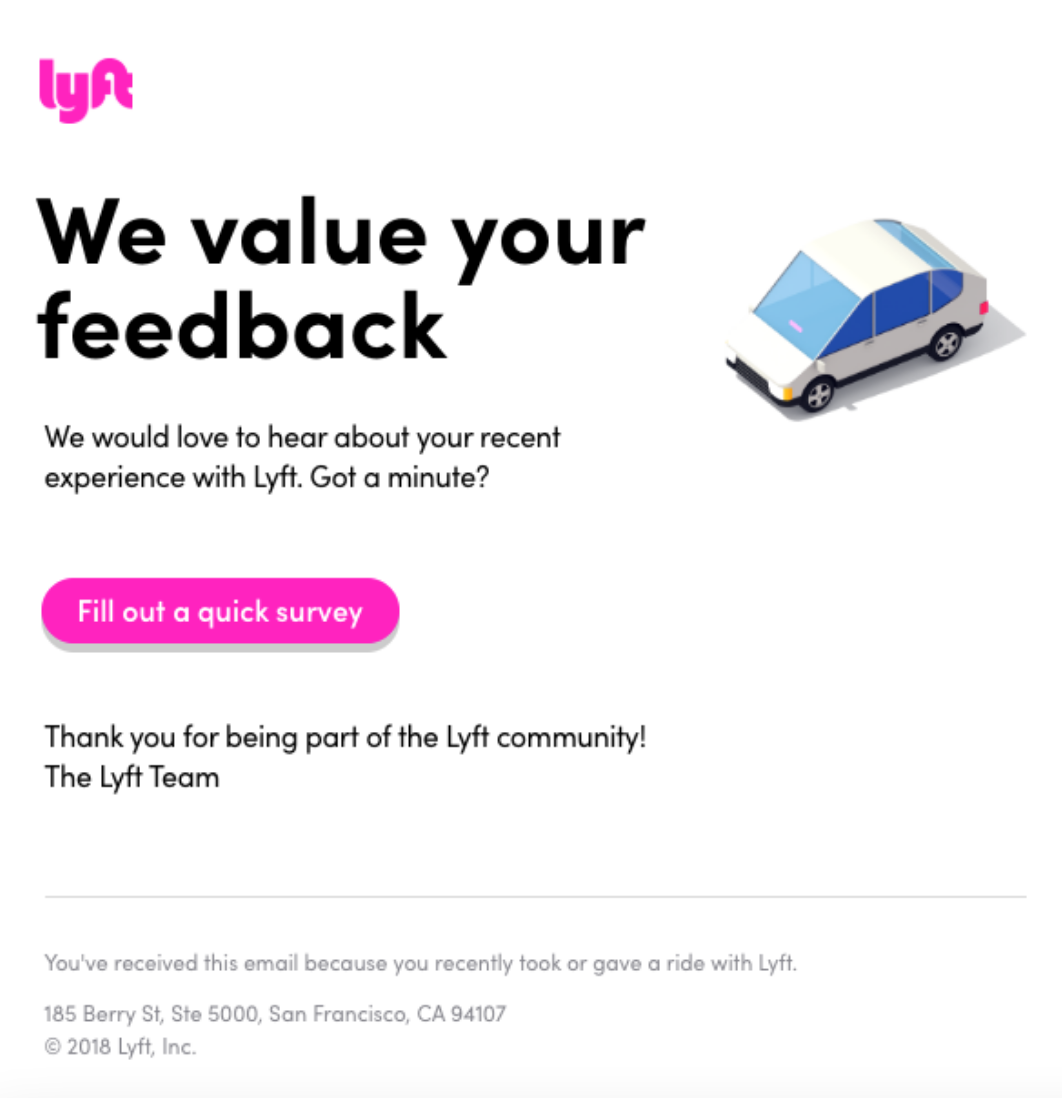Email Marketing
What makes a good subject line?
Subject lines are an important part of your email, so here's how to not mess them up.
Read More →
Appreciating your subscribers is a great idea, but it's easy to fall into traps that may reverse your good intentions.
Customers like to feel valued — and brands like to pay them tribute with thank you emails that appreciate their loyalty. Especially between Thanksgiving and the New Year, we're seeing more thank you emails in our inboxes.
But are they a good idea? And should your brand send one, too?
On the one hand, every brand should show how much they appreciate their customers. After all, they are the one thing keeping your company in business. If they are happy and content with you, they are more likely to become repeat customers and enhance your brand reputation by encouraging others to purchase from you.
However, the other hand holds divisive opinions. Are they really that necessary, as they rarely form part of a campaign or strategy focused on a marketing funnel? Do they generate the value to justify the time and effort for email teams to create them? And do they add to inbox 'noise', at a time where everyone's inbox is fit to burst anyway? Many argue that marketers are better served putting their resources into other areas that add more tangible value.
Let's explore the arguments on both sides.
Appreciating your customer can be a fantastic way of building, or maintaining, brand loyalty. Simply thanking them for their custom over the past year can be enough, but many companies go beyond this message to show their appreciation.
Stack Overflow's '10 years' email attributes their success to their users, and their usage and support. The email includes a short 'thank you' video, as well as a short message that includes some great statistics on the company's progress.

Source: Really Good Emails
The key message is uncluttered, humble and feels personal. Anyone receiving this who had been part of Stack Overflow's journey will likely have felt a sense of pride and gratitude on being thanked for their help and loyalty. Its letter-based style makes this campaign feel like a personal conversation and helps connect the reader to the brand. Having it addressed from the founder (Joel) puts a face to the brand too. This email, above all else, makes customers feel part of something, and that is a powerful message to convey.
Sometimes words just aren't enough. Small rewards are a nice way of thanking subscribers by giving back to them. This could be a free giveaway, a discount code or access to exclusive offers. Tangible rewards that offer real value can go a long way to ensuring your community feels appreciated. Gaming giant Playstation operates in a space where customers and supporters are fiercely passionate and vocal about their likes and dislikes. Making them feel part of a valued community can be a powerful asset to Playstation's marketing, and product, activities. However, they are also used to marketing 'speak' that promises a lot but fails to deliver to their standards, so words lose their meaning. They respond to something more concrete.

Source: Really Good Emails
Offering a free exclusive gift to back up their message of thanks is a great way to show appreciation, fulfil customer expectations and maintain brand loyalty. The personalised code is dynamically pulled into each email — that means each reward is exclusive to each recipient, increasing their sense of value.
Appreciation isn't confined to the end of the year. One of the most regular 'thank you' emails you'll see is after an event you have attended. These post-event communications usually land in your inbox within 24 hours of an event to follow up and maximise on the attendee's interest by including CTAs that link to further touch points with the brand. But, perhaps most importantly, they appreciate their attendance.

Source: Really Good Emails
Invision's Design + Ethics event invited their guests to interact with their brand further by checking out photos from the event on their Facebook page. This is a great way to share a sincere thank you message whilst stimulating further brand interaction — and to ensure that the engagement with Invision doesn't end at the event. This style of email isn't limited to events though. In fact, they are very common. Service industries, like restaurants or transportation for example, usually send a follow-up email after using or visiting them, thanking you for choosing them and asking for feedback if originally booked online.

Source: Really Good Emails
This email from ride-share company Lyft not only lets the recipient feel like their experience and opinion matters, but can also let Lyft gather information about their good points and where to improve. A win-win!
Whilst appreciating your customers is a key staple of how any company should operate, are thank you emails actually useful in achieving this? And do they require disproportionate time and effort for email teams to create in comparison to the tangible benefits they provide?
Creating any kind of email is a time and resource consuming process—and that means that any email must provide real value. And there are arguments that simple appreciation emails fail to meet this. Many run the risk of:
All of the above may seem objective and 'easy to avoid' but they do carry some significant implications. If an email intended to appreciate subscribers actually ends up being poorly received, it can create negative reactions towards your brand. It could even result in unsubscribes, undoing so much previous effort.
So should you be sending thank you emails?
Thank you emails can be a powerful tool to connect with your audience — but you have to take a strategic approach to get them right. To make sure your thank you emails provide value and strengthen the relationship with your subscribers, ensure that you:
Taxi helps marketing teams make better quality email, quicker, at a larger scale.